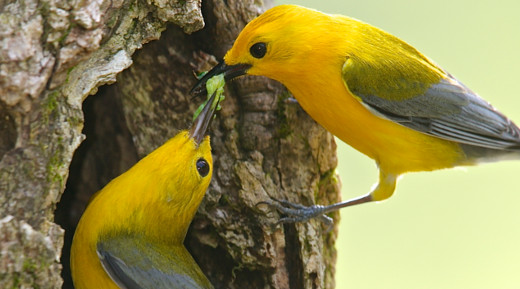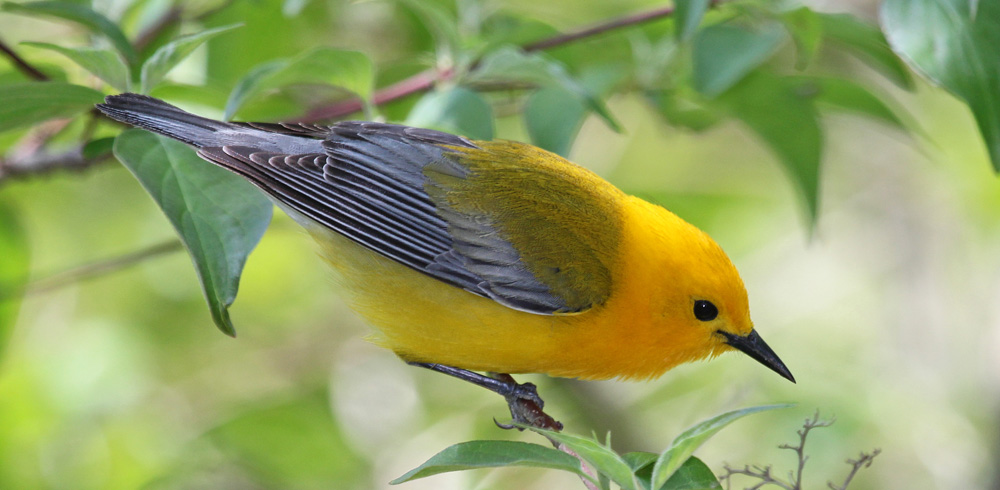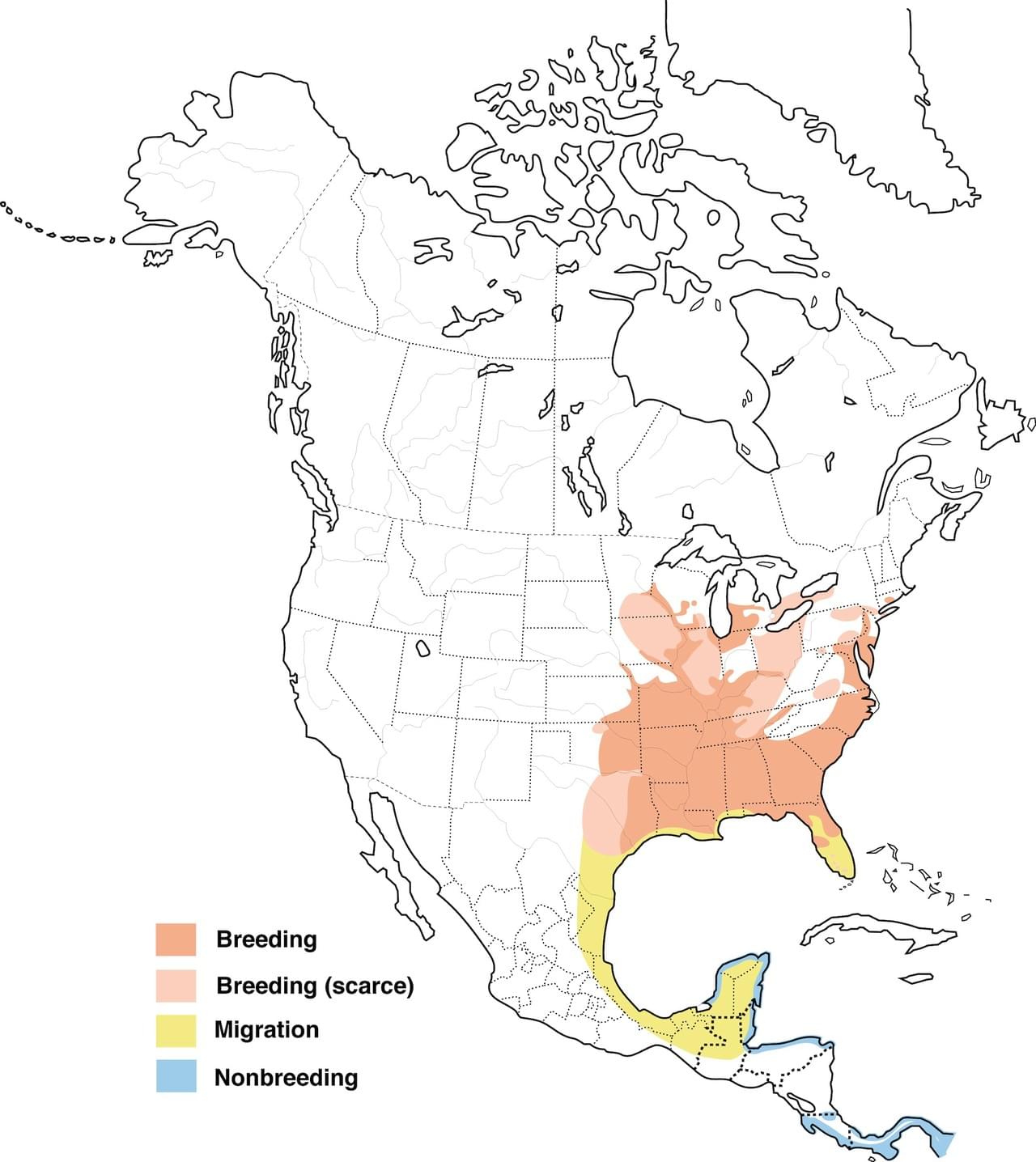 With warm weather approaching, you are likely to see one of the most beautiful spring and summer residents of the James River Watershed, the prothonotary warbler!
With warm weather approaching, you are likely to see one of the most beautiful spring and summer residents of the James River Watershed, the prothonotary warbler!
Also known as the canary of the swamp, this gorgeous bird makes its home in wetlands, and nests in tree cavities dug out by woodpeckers. After spending the winter on the Yucatan Peninsula and in Central and South America, the prothonotary warbler, scientific name Protonotaria citrea, makes its way across the Gulf of Mexico to the southern United States. Some individuals even go as far north as Ontario! It then makes its home in flooded, bottomland forests, cypress swamps, and by the banks of rivers. Unique among warblers, they utilize cavities in dead trees that are dug out by woodpeckers and other birds. Water around the base of their nesting trees can help deter predators who would like to feast on their helpless young.
To warblers, looks are indeed everything. Males that are brighter yellow out-compete their duller rivals and can obtain better nesting sites. A male will line a suitable site with moss, and if a female approves, she will begin constructing a nest. Pairs may have one to three broods of chicks during the season, rearing three to seven young at a time!
Today, these brilliant warblers are threatened with habitat loss from development and the destruction of wetlands. Currently, their population has declined 40% in the past 50 years. It’s not all doom and gloom, though! A recent resurgence in beaver populations may in fact help the prothonotary warbler. As beavers dam up streams, they can create the inundated wooded wetlands that the prothonotaries require as habitat.
Do you live near a wetland and want to help the prothonotary warbler? You can build a nesting box for this swamp-dweller to rear its young in. Here are some plans for a fun weekend project!


